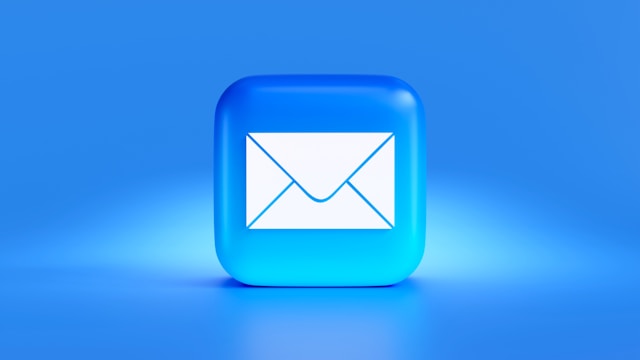
You want smarter emails that feel human and take less time to ship. AI email personalization gives you that edge by turning clean inputs into messages that match intent, timing, and tone. In this guide, you will connect structured data to dynamic copy, build simple automations, and measure what actually moves open rates, click-throughs, and booked calls.
Everything I’ve shared here—and more—is in my book, available on Amazon. Click the link if you’re ready to take the next step.
AI Email Personalization: Build a Clean, Useful Data Foundation
Strong personalization starts with clean, consistent data. Map the fields and keep them tidy so every send carries context that matters.
Map Fields for AI Email Personalization Across Tools
Start with a field map. List every contact property inside your ESP and CRM. Add easy wins such as last content viewed, last click topic, lead source, timezone, and preferred format. Align names and formats across your stack so tools speak the same language. If you use forms, add hidden fields for campaign and source. If you rely on social signups, sync those tags at the point of capture.
Create a simple schema document. For each field, note the data type, source, and the flows that use it. Keep this map close. You will use it when you build segments, write dynamic content, and troubleshoot deliverability.
Field Map Schema (Template)
| Field | Type | Source | Used In | Default | Notes |
| text | form | all flows | required | unique identifier | |
| first_name | text | form | greeting, subject line | empty | avoid a fallback that sounds generic |
| last_click_topic | text | link tracking | subject, intro, content block | none | normalize topics with a controlled list |
| timezone | text | user selection/IP | send-time optimization, quiet hrs | UTC | validate on capture |
| client_stage | enum | CRM pipeline | pitch frequency, proof block | lead | stages: lead, active, trial, customer |
| preferred_format | enum | preference center | content layout | short email | short email, long email, digest |
| consent_source | enum | form/webinar/ref | compliance tracking | form | store capture path |
| subscription_status | enum | ESP | suppression rules | subscribed | subscribed, paused, unsubscribed |
Define Segments by Behavior, Not Demographics
Job titles and company sizes provide some insight. Behavior drives outcomes. Segment by signals that show intent, such as last click category, recency, frequency of actions, and stage in your pipeline. Try these sets:
- Warm readers: clicked in the previous 30 days and viewed at least two topics
- Ready to talk: clicked a booking link or replied to a pricing email
- Learning mode: downloaded a guide and clicked educational posts with no service pages yet
Behavioral segmentation improves timing and resonance. You also protect list health by ensuring messages align with where a reader stands today.
Set Rules for Consent, Tagging, and Data Hygiene
Strong personalization rests on trust. Offer clear consent choices during signup and inside your preference center. Use double opt-in for lists with many freebie seekers. Tag the consent path, such as form, pop-up, webinar, or referral. Clean your list monthly. Remove hard bounces, suppress chronic non-openers after a focused re-engagement attempt, and archive spam complainers.
Build a short data hygiene checklist:
- Standardize date and country formats
- Normalize free-text values with a controlled list for topics
- Automate field repairs through your ESP rules or a Zapier step
AI Email Personalization: Write Messages That Feel Tailored
Readers lean in when your email mirrors what they care about right now. Pair dynamic blocks with a clear voice to make each message feel handwritten.
Use Dynamic Blocks to Scale AI Email Personalization
Write one email that reads five ways. Dynamic content blocks swap in based on segment, stage, or last action. Examples:
- Subject lines that echo the previous click topic
- Intros that reference a downloaded guide or webinar
- Case studies matched to industry or problem type
- CTAs that shift from learn to schedule when a reader crosses a threshold
Keep each block short. Two to four lines per variant carry the point. Use conditional logic in your ESP or a template system with clear names. Test the default view regularly to ensure untagged contacts receive a coherent message.
Dynamic Block Matrix (Template)
| Segment | Situation | Block Shown | Goal | Fallback |
| Warm readers | Last click on pricing guide | Short proof with soft invite to call | Booked call | Educational tip with resource |
| Learning mode | Downloaded checklist | How-to snippet with next resource | Second click | Digest opt-in |
| Ready to talk | Viewed a case study page | Industry-matched case study with link | Schedule meeting | One-question reply |
| Customers | Completed project survey | Upsell tip or maintenance reminder | Expansion inquiry | Thank you with best of |
Build a One-Page Voice Guide for Your Niche
Great personalization relies on a steady voice. Create a one-pager that captures how you speak for your brand or for a client:
- Three anchor traits, such as practical, friendly, and precise
- Go-to phrases you use to invite action
- Phrases to avoid because they feel salesy or vague
- Formatting rules for numbers, links, and sign-offs
- Two short sample emails that show tone in action
Pin this guide beside your prompt library. Consistency lets your segments feel distinct without sounding scattered.
Train Prompts on Past Wins and Client Stories
Feed your AI assistant with real material. Paste three successful emails with strong replies or bookings. Add two short client stories that show the problem, the action, and the outcome. Then craft prompt templates that pull from your field map.
Examples you can adapt:
- “Write a 130-word check-in for readers tagged learning_mode who last clicked pricing. Open with a question about their timeline. Offer a mini case study from the voice guide. Close with a soft invite to a 15-minute call.”
- “Draft a follow-up for contacts who downloaded the proposal checklist and clicked a booking link without scheduling. Acknowledge the step, share one tip from the checklist, and provide a calendar link.”
Track which prompts raise reply rates or conversions. Keep the winners and prune the rest.
AI Email Personalization: Automate Journeys That Respect the Reader
Timely emails win more clicks than perfect prose. Build lean journeys with smart triggers and safety checks so people never feel bombarded.
Draft a Simple Welcome, Nurture, and Win-Back Flow
Start with three flows you can maintain.
Welcome series
- Email 1: Set expectations on cadence, topics, and value
- Email 2: Share a short story from your work that solves a common problem
- Email 3: Invite a light interaction through a one-click topic choice or a short survey link
Nurture sequence
Mix how-to emails, mini case studies, and resource roundups. Tie each message to one action, such as reading a guide, replying to a short question, or viewing a case study page.
Win-back campaign
Send to readers who stopped engaging. Offer a best-of resource, then a concise choice to stay on a monthly digest or opt out. Keep the copy tight so the decision feels easy.
Set Event Triggers and Throttle Rules to Prevent Overload
Map key events to triggers such as form completion, proposal request, webinar attendance, last click on a booking link, or a pricing page visit. Each event can push a reader into a short branch. Throttle messages to protect attention.
- Pause nurture when a booking occurs
- Limit to one marketing email per day across all flows
- Skip promotions for readers currently in a proposal stage
- Respect quiet hours by timezone
Add Checkpoints to Pause or Switch Tracks After Key Actions
Let journeys adapt in real time. Add checkpoints to confirm status changes. When a reader replies, shift to a manual follow-up. A new trial or booked call triggers an onboarding handoff and pauses sales emails. After four weeks of low engagement, move the contact to a low-frequency digest. These checkpoints keep your messaging relevant.
Flow Inventory (Template)
Replace big diagrams with a working inventory that shows each send at a glance.
| Flow | Trigger | Segment | Goal | Primary KPI | Status | Owner | Next Review | |
| Welcome Series | W1: Expectations & Value | Sign up for the form or the lead magnet | New subscribers | Set expectations and earn the first click | Confirmed opt-ins, First click | Live | Owner | 2025-10-01 |
| Welcome Series | W2: Problem → Quick Win | Welcome 1 delivered | New subscribers | Deliver a quick win | CTR | Live | Owner | 2025-10-01 |
| Welcome Series | W3: Choose Topic or Survey | Welcome 2 delivered | New subscribers | Capture topic preference | Topic tags captured | Live | Owner | 2025-10-01 |
| Nurture | N1: How-To | Welcome complete | Learning mode | Earn a second click | CTR | Planned | Owner | 2025-10-08 |
| Nurture | N2: Case Study | N1 delivered | Warm readers | Drive reply or booking view | Replies, Booking views | Planned | Owner | 2025-10-08 |
| Nurture | N3: Resource Roundup | N2 delivered | Learning mode | Grow resource depth | Clicks per send | Planned | Owner | 2025-10-08 |
| Sales Follow-Ups | S1: Proof + Calendar | Pricing view or calendar click | Ready to talk | Book a call | Booked calls | Live | Owner | 2025-09-29 |
| Sales Follow-Ups | S2: Objection Handler | No booking within three days | Ready to talk | Surface next step | Replies | Draft | Owner | 2025-09-29 |
| Win-Back | WB1: Best-Of Resource | No opens for 30 days | Dormant subscribers | Re-activate | Re-engagement rate | Draft | Owner | 2025-10-15 |
| Win-Back | WB2: Keep Monthly Digest | WB1 delivered | Dormant subscribers | Capture preference | Unsubscribes, Digest opt-ins | Draft | Owner | 2025-10-15 |
| Digest | DG1: Monthly Highlights | Month end | Low-frequency segment | Maintain light touch | CTR | Live | Owner | 2025-10-05 |
AI Email Personalization: Measure Impact and Improve Fast
Real growth comes from disciplined feedback loops. Pick one metric per flow, test one change at a time, and roll the wins into next week’s send.
Pick One Primary Metric per Flow and Track Weekly
Clarity creates momentum. Assign a single metric to each flow:
- Welcome: confirmed opt-ins and first click
- Nurture: click-through rate and replies
- Win-back: re-engagement rate and unsubscribe rate
- Sales follow-ups: booked calls and proposal requests
Review weekly in a simple dashboard. Add context from deliverability, bounce rate, and spam complaints. Numbers tell a clearer story when you connect them to behavior.
Run Tight A/B Tests Tied to a Single Change
Small changes teach fast. Test one lever at a time, such as subject line length, first sentence, CTA style, or sender name. Keep sample sizes even and stop when you reach a clean threshold. Record the winner and the lesson in a running log. That log compounds your learning across clients.
Build a Monthly Review That Sharpens AI Email Personalization
Schedule a one-hour review. Bring your dashboard, prompt log, and flow notes. Ask three questions:
- Which segment clicked and booked the most this month
- Which emails drove the cleanest replies with clear next steps
- Where did complaints or unsubscribes spike
Decide on one improvement per flow. Update the voice guide if new phrases work better. Retire weak blocks. Add a fresh case study to the highest-value segment. Finish with a short plan for next month that includes one test, one content refresh, and one deliverability check.
Asset: KPI Dashboard Snapshot
CTR by Segment
| Segment | Sends | Clicks | CTR |
| Warm readers | 2,000 | 260 | 13.0% |
| Learning mode | 3,500 | 280 | 8.0% |
| Ready to talk | 800 | 168 | 21.0% |
| Customers | 1,200 | 132 | 11.0% |
Weekly Booked Calls
| Week Starting | Booked Calls |
| 2025-08-25 | 9 |
| 2025-09-01 | 12 |
| 2025-09-08 | 14 |
| 2025-09-15 | 11 |
Use charts in your analytics tool to mirror these tables. A quick bar chart for CTR by segment and a simple line for weekly booked calls keep trends obvious at a glance.
Practical Tips You Can Use Today
- Keep forms lean. Each extra field reduces conversions. Use progressive profiling to fill gaps later through short surveys or reply prompts.
- Add micro-personalization to subject lines. Pull in the last topic, city, or tool of interest. Stay specific and short. Cheap tricks erode trust.
- Track link intent with UTM tags. Mark the target and the desired action. Your analytics report will show which topics led to bookings or replies.
- Mind deliverability. Warm new sending domains, authenticate with SPF, DKIM, and DMARC, and validate imported lists. Strong inbox placement lifts every downstream metric.
- Use content blocks across clients. Create a library for welcome introductions, problem-solution stories, and concise proof snippets. Tag blocks by problem and stage so you can pull the right piece fast.
- Lean on social proof. Rotate one-sentence testimonials inside dynamic sections. Match the evidence to the reader’s segment or last click topic.
- Explore predictive features when ready. Consider implementing send-time optimization, churn prediction, or lead scoring once your data hygiene is in good shape. Pilot on a small segment and expand only when uplift appears.
- Tighten analytics. Track opens for list health, clicks for interest, and conversions for value. Tie key actions to goals so revenue per recipient becomes easy to read.
- Keep a prompt log. Save prompt versions next to their results. Mark winners and reuse them for similar segments.
Final Thoughts
Freelance writers win when systems carry the weight and creativity lands at the right moment. With AI email personalization, you connect structured data to tailored copy, run journeys that respect attention, and improve results through clear feedback loops. Start small, move one lever at a time, and let your voice stay steady while the workflow scales.


Pingback: AI Personal Branding For Freelancers With Proven Tools - The AI Freelancer